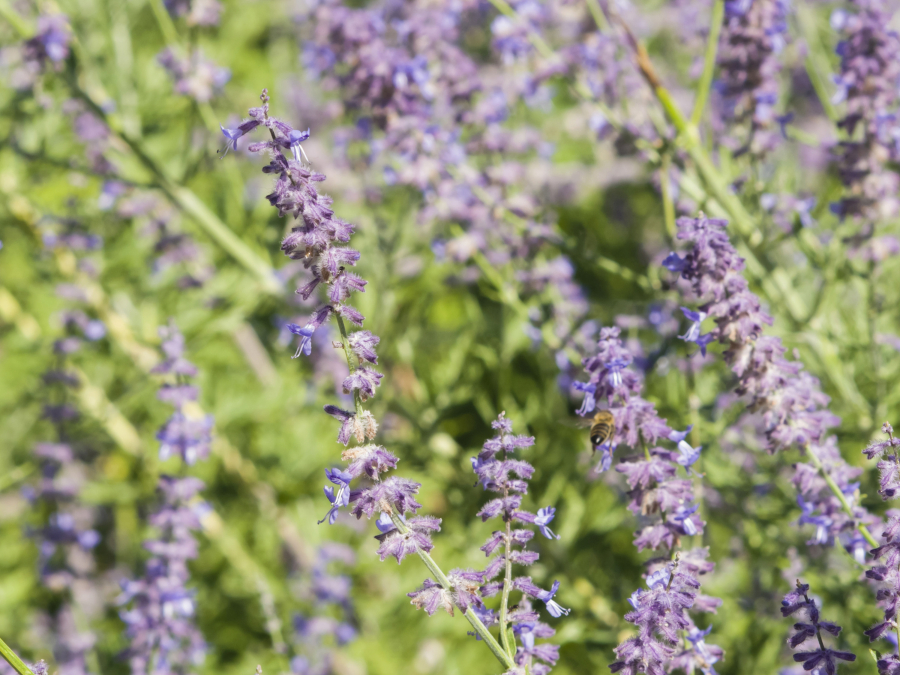The hot colors of midsummer dominate landscapes these days. And there is nothing subtle about the fiery reds, hot pinks, vivid yellows and sunny oranges that stand out so beautifully in flowerbeds.
But sometimes all this glory requires a bit of toning down with a cooler, less robust color. One of the nicest choices for this job is Russian sage. In summer, its flowers bring a soft shade of blue to violet to a garden on a plant with a different shape and style from most summer perennials.
This is a fine, no-nonsense, heat-tolerant perennial that is very rewarding and answers the call for something a bit different. For one thing, Russian sage sends up multiple flower stems that remain vertical until the top arches gracefully under the weight of the flowers that appear along the stems.
These spikes, with silvery green foliage, can grow about 3 feet tall, which makes them right for the back of a flower bed, perhaps paired with yellow perennial sunflowers reaching about the same height, or just behind the Goldsturm black-eyed Susans, which are golden yellow. The blue to violet of the sage’s flowers goes beautifully with yellow, each bringing out the best in the other, and the contrasting shape of the blooms is lovely.
It also goes well with pink and red, and there is plenty of that for contrast. Some much shorter dwarf forms such as Little Spire, about 2 feet tall, also exist.
I also like the airy look the stems possess. Many perennials, such as Shasta daisies, produce stems that are packed tightly and stand stiffly, but the Russian sage has a looser look that moves gently in a breeze.
This is not a particularly well-known perennial and can be easily overlooked when selecting plants in spring in favor of the better known Shasta daisies, purple coneflowers or coreopsis.
However, if you have a blank spot in a bed or possess a plant that isn’t doing well — or even one that you just don’t like — you can easily slip a plant of Russian sage into that space. They actually tolerate dry soil, but soggy soil invites decline.
Think of it like a rosemary or lavender, which also tolerate dry soil. However, watering is essential in the early days after transplanting while the roots get reestablished. Be sure to set the top of the root ball even with the surrounding soil.
This is a hardy plant that should have no problem seeing it through the winter, provided the soil does not get soggy. It can be cut back in late winter or early spring before new growth breaks.



